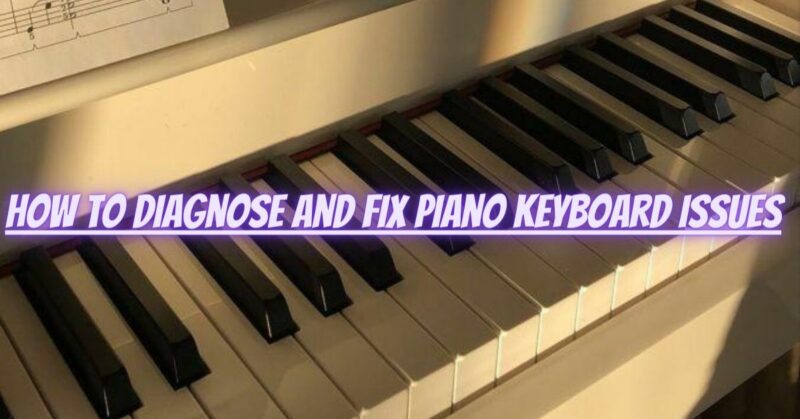A piano keyboard is a complex musical instrument with various components and electronic systems, and just like any other electronic device, it can encounter issues from time to time. Diagnosing and fixing piano keyboard issues can be a daunting task, especially for those who are not familiar with the instrument’s inner workings. In this comprehensive guide, we’ll provide step-by-step instructions on how to effectively diagnose and troubleshoot common piano keyboard issues and offer practical solutions to fix them.
Step 1: Identify the Problem
- Listen Carefully: Pay attention to any unusual sounds, buzzing, clicking, or erratic behavior when playing the keys or using various functions.
- Check the Display: Ensure the display is functioning correctly and showing the necessary information.
- Test all Keys and Functions: Play each key and test all functions, such as volume control, modulation, pitch bend, sustain pedal, and various instrument sounds.
Step 2: Check Power Supply
- Ensure Power Source: Confirm that the piano keyboard is adequately connected to a functioning power source or batteries (if applicable).
- Test Outlet: Plug the keyboard into a different electrical outlet to rule out issues with the power source.
Step 3: Clean and Maintain
- Dust and Debris: Clean the keyboard regularly using a soft, lint-free cloth or compressed air to remove dust and debris that may interfere with the keys or electronic components.
- Lubrication: Apply the appropriate lubricant to the keys and other moving parts, if necessary, to ensure smooth operation.
Step 4: Check Connections
- Inspect Cables and Connectors: Verify that all cables and connectors are securely plugged in and not damaged.
- Check MIDI Connections: If using MIDI functionality, ensure proper MIDI connections to external devices.
Step 5: Firmware and Software
- Update Firmware: Check if there are any available firmware updates for your piano keyboard model on the manufacturer’s website. Install updates if necessary.
- Software Issues: If using software applications, ensure they are updated and compatible with your piano keyboard.
Step 6: Environmental Factors
- Temperature and Humidity: Keep your piano keyboard in a stable environment with controlled temperature and humidity levels to prevent damage from extreme conditions.
Step 7: Seek Professional Help
- Complex Repairs: If the issue seems beyond your expertise, or you are unsure about opening the piano keyboard, seek assistance from a qualified piano technician or the manufacturer’s customer support.
- Warranty: If the piano keyboard is under warranty, contact the manufacturer or authorized service center for repairs.
Conclusion:
Diagnosing and fixing piano keyboard issues may require patience, careful observation, and sometimes technical expertise. Regular maintenance, proper cleaning, and attention to environmental factors can prevent many problems. However, if issues arise, following this comprehensive guide will help you identify the problem and implement the appropriate solution. When in doubt or facing more complex issues, don’t hesitate to seek assistance from professionals to ensure the optimal performance and longevity of your piano keyboard, allowing you to enjoy creating beautiful music with ease.

